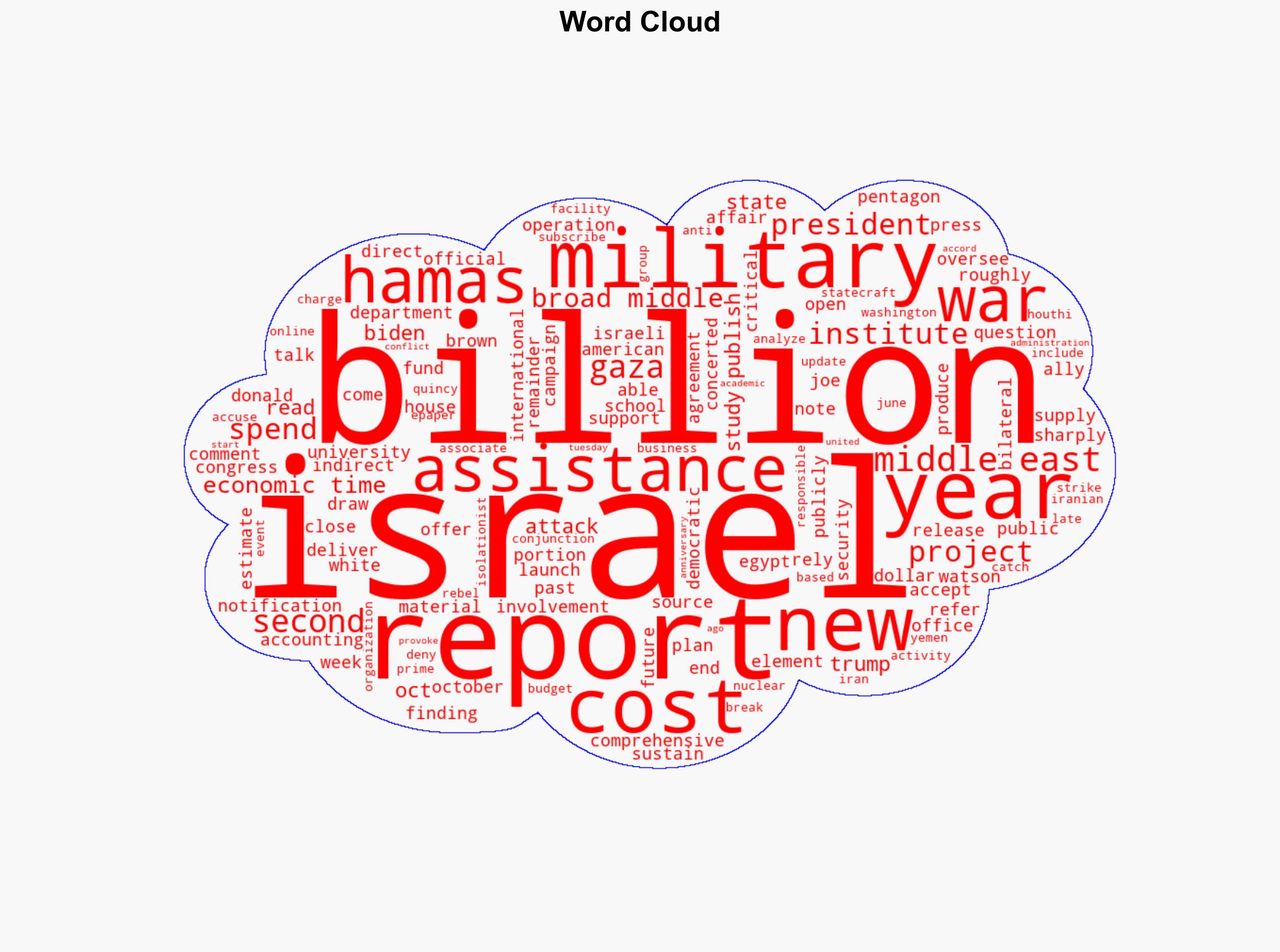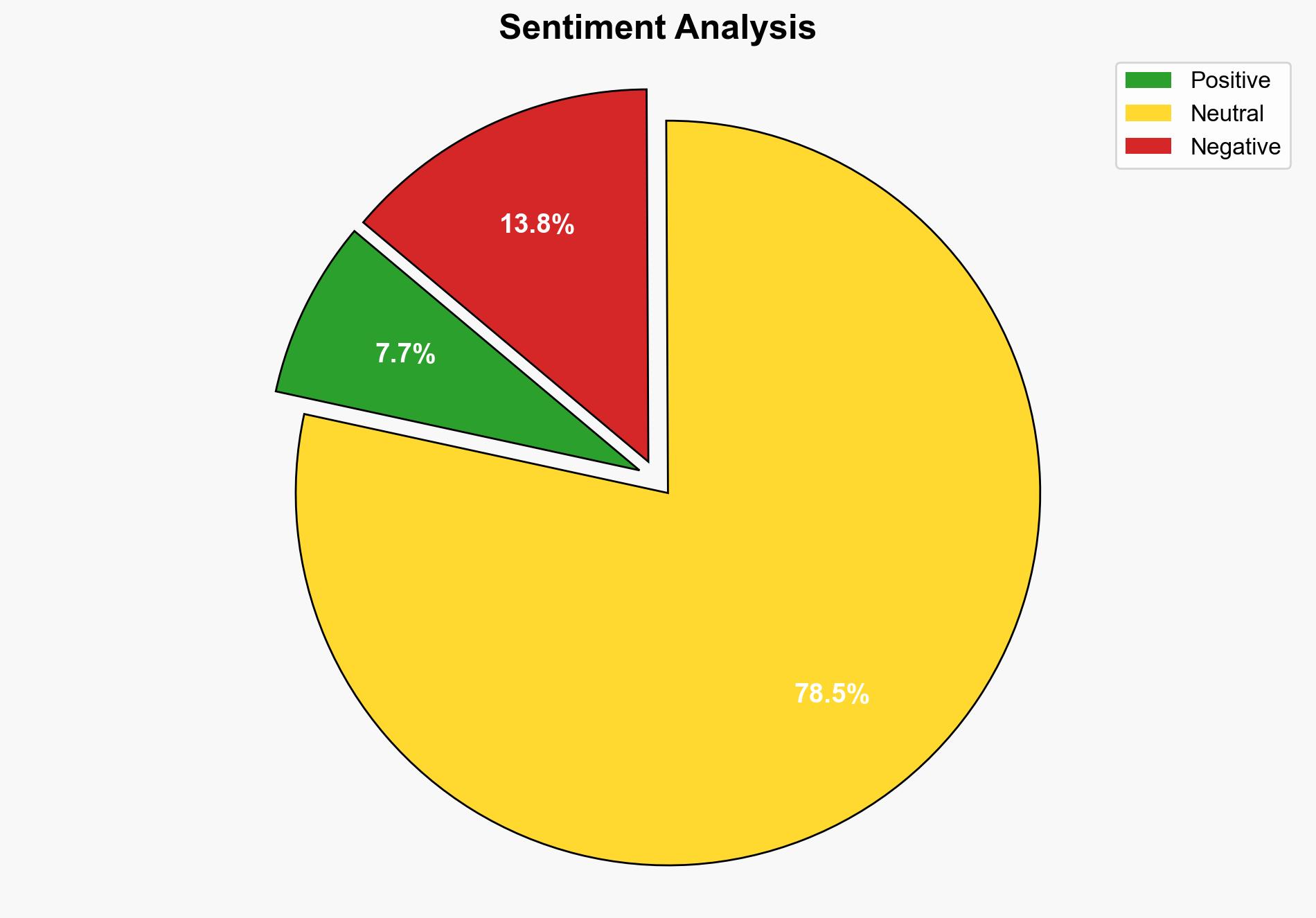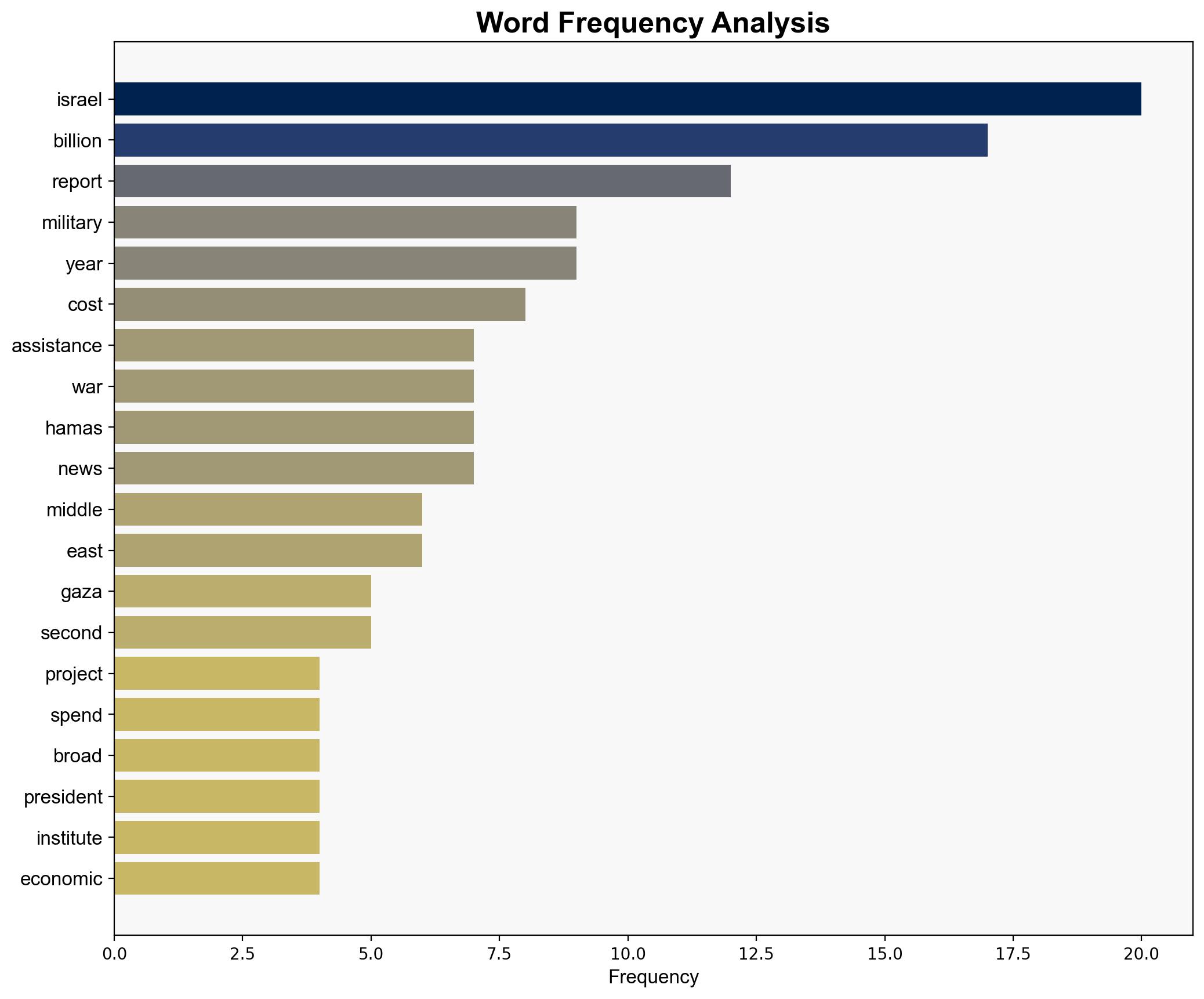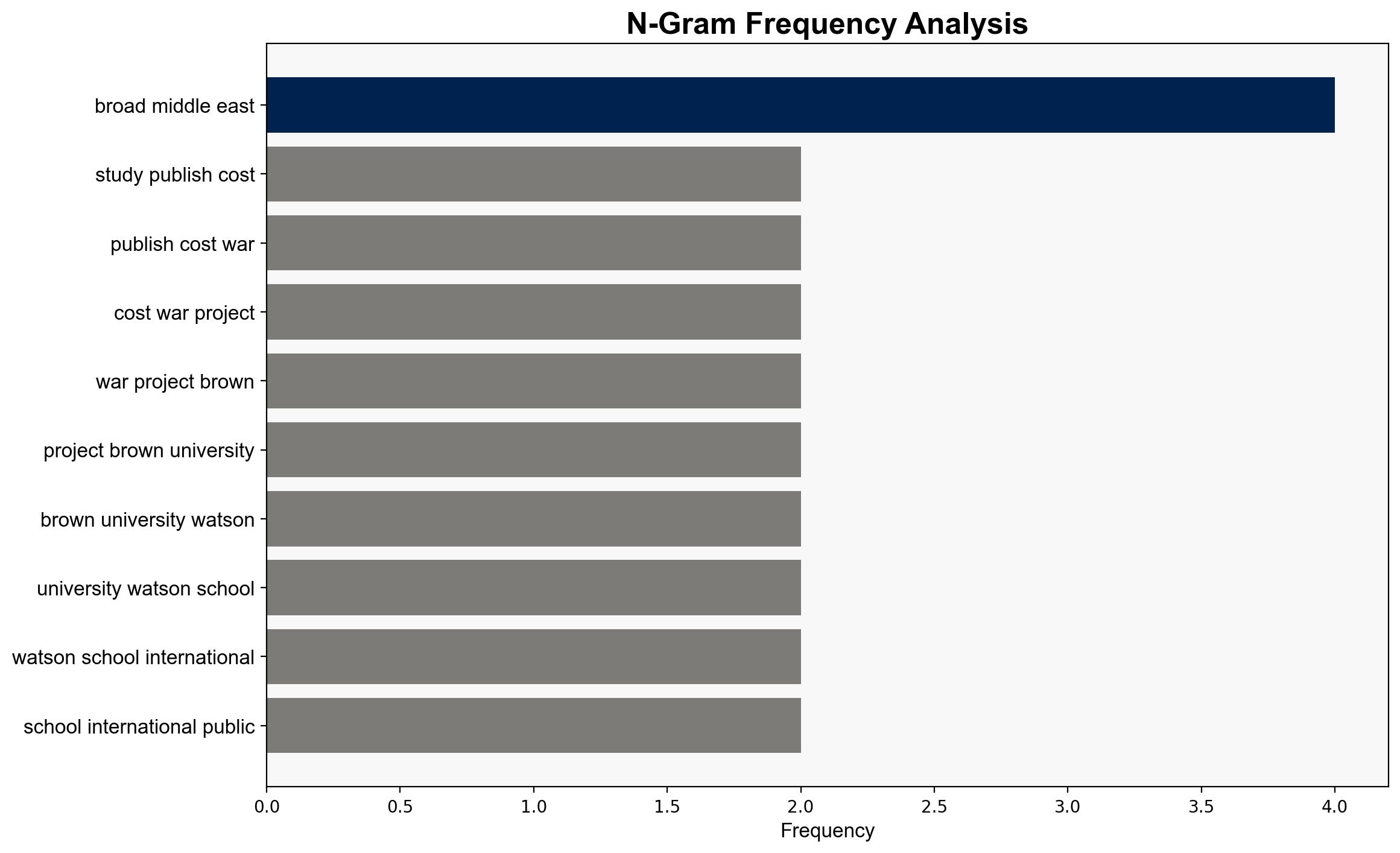US has given at least 217 billion in military aid to Israel since war in Gaza began report says – BusinessLine
Published on: 2025-10-07
Intelligence Report: US has given at least 217 billion in military aid to Israel since war in Gaza began report says – BusinessLine
1. BLUF (Bottom Line Up Front)
The report suggests significant US military aid to Israel, potentially impacting regional stability and US foreign policy. The hypothesis that the aid is part of a broader strategic alignment with Israel is better supported. Confidence level: Moderate. Recommended action: Review and reassess US military aid policies to ensure alignment with broader strategic goals in the Middle East.
2. Competing Hypotheses
1. **Hypothesis A**: The US military aid to Israel is primarily driven by strategic interests in maintaining a strong ally in the Middle East, ensuring regional stability, and countering Iranian influence.
2. **Hypothesis B**: The aid is primarily influenced by domestic political pressures and lobbying efforts, rather than strategic necessity, reflecting a continuation of historical support patterns irrespective of current geopolitical dynamics.
3. Key Assumptions and Red Flags
– **Assumptions**:
– Hypothesis A assumes a coherent US strategy in the Middle East that prioritizes Israel’s military strength.
– Hypothesis B assumes significant influence of domestic political entities on foreign aid decisions.
– **Red Flags**:
– Lack of transparency in the exact allocation and purpose of the aid.
– Potential bias in the source due to affiliations with groups critical of US-Israel relations.
– **Blind Spots**:
– The report does not address the impact of aid on US relations with other Middle Eastern countries.
4. Implications and Strategic Risks
– **Patterns**: Continued high levels of military aid to Israel may embolden Israeli military actions in Gaza and beyond, potentially escalating regional tensions.
– **Cascading Threats**: Increased aid could provoke adversarial actions from Iran and its proxies, leading to broader regional conflicts.
– **Economic and Geopolitical Dimensions**: The aid could strain US relations with Arab nations and impact global oil markets if regional instability increases.
5. Recommendations and Outlook
- **Mitigate Risks**: Conduct a comprehensive review of military aid to ensure it aligns with broader US strategic interests and does not exacerbate regional tensions.
- **Exploit Opportunities**: Use aid as leverage to encourage peace negotiations between Israel and Palestinian entities.
- **Scenario-Based Projections**:
– **Best Case**: Aid leads to a strengthened Israeli defense posture that deters regional threats without provoking conflict.
– **Worst Case**: Aid exacerbates tensions, leading to a new cycle of violence in the Middle East.
– **Most Likely**: Aid continues at current levels, maintaining the status quo but with periodic escalations.
6. Key Individuals and Entities
– Joe Biden
– Donald Trump
– Quincy Institute for Responsible Statecraft
7. Thematic Tags
national security threats, regional focus, US foreign policy, Middle East stability




